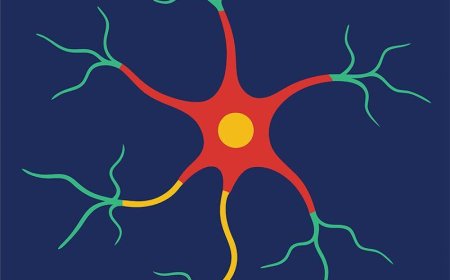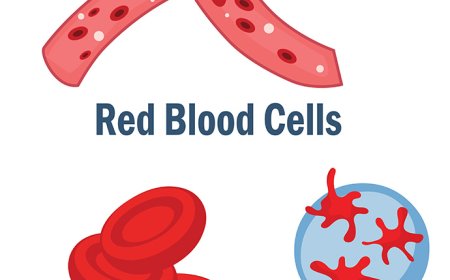Air Pressure & Temperature for Kids – How They Shape Weather Patterns
Learn about air pressure and temperature for kids. Discover how differences in pressure and heat create wind, clouds, and weather fronts—everything from sunny skies to storms—explained simply.
🫁 Parts of the Respiratory System: From Nose to Lungs – A Guide for Students
Breathing may seem simple, but behind every breath is a powerful system made of many different parts. Each part of the respiratory system has a special job: to take in fresh air, filter and warm it, deliver oxygen, and remove carbon dioxide. From the moment air enters your nose to the time it reaches the alveoli in your lungs, this system works smoothly and silently—day and night.
Let’s follow the journey of a single breath and explore each part that helps it along the way.
👃 The Nose and Nasal Cavity
Breathing usually starts in your nose, which is more than just a place to smell. Inside your nose is the nasal cavity, which is lined with tiny hairs (cilia) and mucus membranes. These structures:
- Filter out dust and germs from the air
- Warm and moisten the air before it travels to your lungs
- Help protect your lungs from harmful particles
If your nose is stuffy, you might breathe through your mouth, which also brings in air—but it doesn’t filter or warm it as well.
🧵 The Pharynx and Larynx
Air from your nose or mouth passes into the pharynx (throat), which is shared with the digestive system. The pharynx connects to the larynx, or voice box.
The larynx:
- Controls your voice—it has vocal cords that vibrate when you talk or sing
- Keeps food out of your lungs—a flap called the epiglottis closes over the airway when you swallow
Without the larynx and epiglottis, food or water could go down the wrong pipe and make you choke.
🌬️ The Trachea (Windpipe)
Below the larynx is the trachea, or windpipe. It’s a long tube that carries air down into your chest. The trachea is supported by C-shaped rings of cartilage, which keep it open so air can flow easily.
The inside of the trachea is also lined with cilia and mucus, which trap dust and push it out—like a conveyor belt of cleanliness for your lungs.
🌲 The Bronchi and Bronchioles
The trachea splits into two large tubes called bronchi, one going into each lung. These bronchi branch into smaller and smaller tubes called bronchioles, just like branches of a tree.
These tubes deliver air to all parts of the lungs. Each lung has thousands of bronchioles, making sure oxygen gets where it’s needed.
🫁 The Lungs
Your lungs are two sponge-like organs in your chest, protected by your ribs. They are where air meets blood. The right lung has three lobes; the left lung has two lobes (because the heart takes up space on that side).
The lungs don’t move on their own—they rely on muscles to inflate and deflate with every breath.
⚪ The Alveoli
At the end of the bronchioles are alveoli, tiny air sacs where the real exchange happens. Each lung contains over 300 million alveoli, surrounded by capillaries.
In the alveoli:
- Oxygen moves from the air into the blood
- Carbon dioxide moves from the blood into the air
This is called gas exchange, and it keeps your blood oxygen-rich and ready to power your body.
💪 The Diaphragm and Rib Muscles
You breathe in and out thanks to the diaphragm, a large muscle under your lungs. When the diaphragm contracts, it flattens, pulling air into the lungs. When it relaxes, it moves up and pushes air out.
Your intercostal muscles (between your ribs) also help expand and shrink your chest as you breathe. Together, they act like a pump to move air in and out all day and night—even when you’re sleeping.
🎉 Fun Facts About the Respiratory System Parts
- The trachea is about 4 inches long, but can stretch when you breathe deeply
- Your right lung is larger than your left
- Cilia in your airways move together like tiny oars to sweep out germs
- You have about 1,500 miles of airways inside your lungs
- When you breathe, you move about 500 milliliters of air per breath—that’s one water bottle!
🧠 Vocabulary
- Nasal cavity – The inside of your nose; filters and warms air
- Cilia – Tiny hairs that trap dust and germs
- Pharynx – The throat; connects the nose and mouth to the trachea
- Larynx – The voice box; helps you talk and swallow safely
- Epiglottis – A flap that keeps food out of the lungs
- Trachea – The windpipe; air tube leading to the lungs
- Bronchi – Two main air tubes entering the lungs
- Bronchioles – Smaller airways that branch off the bronchi
- Alveoli – Tiny air sacs where gas exchange happens
- Diaphragm – Main muscle used for breathing
✅ Interactive Quiz: Name That Part!
1. What part of the respiratory system filters and warms air?
A. Alveoli
B. Diaphragm
C. Nasal cavity
D. Stomach
2. What keeps food from going into your lungs when you swallow?
A. Vocal cords
B. Bronchi
C. Alveoli
D. Epiglottis
3. What is the job of the trachea?
A. Carry food
B. Store oxygen
C. Carry air to the lungs
D. Trap water
4. Where does gas exchange happen?
A. In the diaphragm
B. In the bronchi
C. In the alveoli
D. In the ribs
5. What muscle helps pull air into the lungs?
A. Tongue
B. Diaphragm
C. Skull
D. Elbow
6. What branches from the trachea into each lung?
A. Alveoli
B. Bronchi
C. Capillaries
D. Ribs
🧒 Kid-Friendly Summary
Your respiratory system has lots of helpful parts! Air comes in through your nose, travels down your trachea, and moves through bronchi and bronchioles until it reaches tiny air sacs called alveoli. There, oxygen goes into your blood, and carbon dioxide comes out. Your diaphragm helps pull air in and push it out—all so you can breathe without even thinking!




















































